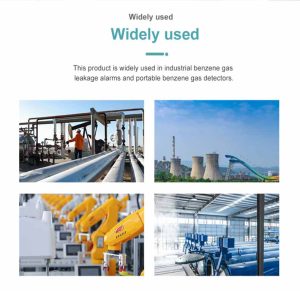Air pollution poses a significant threat to human health and the environment. As the world grapples with the challenges of urbanization and industrialization, monitoring air quality has become crucial for protecting public health and mitigating the negative impacts of pollution. In this regard, gas sensors play a pivotal role in enhancing air quality monitoring systems and promoting environmental health. This article explores the importance of gas sensors, their applications, and their impact on improving air quality monitoring.
The Importance of Air Quality Monitoring:
Air quality monitoring is essential for assessing pollution levels, identifying sources of contamination, and implementing effective measures for pollution control. It provides valuable data that enables policymakers, scientists, and environmental agencies to make informed decisions regarding public health and environmental protection. By continuously monitoring air quality, authorities can identify pollutants, determine their concentrations, and take necessary actions to mitigate pollution risks.
The Role of Gas Sensors:
Gas sensors are critical components of air quality monitoring systems as they detect and measure various gases and airborne pollutants. These sensors can detect both harmful gases, such as carbon monoxide (CO), nitrogen dioxide (NO2), sulfur dioxide (SO2), and volatile organic compounds (VOCs), as well as beneficial gases like oxygen (O2). By measuring pollutant levels accurately, gas sensors provide real-time data needed for effective pollution management and public health protection.
Applications of Gas Sensors in Air Quality Monitoring:
Urban Areas:
Gas sensors are deployed in urban areas to monitor pollution hotspots, traffic emissions, and industrial activities. They help identify areas with high pollutant concentrations and enable authorities to implement targeted mitigation strategies. For example, gas sensors installed near busy roadways can detect high levels of nitrogen oxides (NOx) from vehicle emissions, prompting the authorities to take measures to reduce traffic congestion and promote cleaner transportation alternatives.
Industrial Settings:
Gas sensors are extensively used in industrial facilities to monitor emissions, ensure compliance with environmental regulations, and prevent occupational hazards. By continuously monitoring gases like methane (CH4) and volatile organic compounds, companies can proactively identify leakages, prevent accidents, and improve workplace safety conditions. Gas sensors also support the implementation of emission control technologies and help industries minimize their environmental footprint.
Indoor Environments:
Indoor air quality can be compromised by pollutants from various sources, including cooking, cleaning products, and building materials. Gas sensors integrated into ventilation systems or standalone devices can monitor indoor air quality and provide timely alerts when pollutant concentrations exceed safe thresholds. This enables individuals to take necessary actions such as ventilating the space or minimizing pollutant sources, thus promoting healthier living environments.
Impact on Environmental Health:
The role of gas sensors in enhancing air quality monitoring has a profound impact on environmental health. By providing accurate and real-time data, gas sensors allow authorities to identify pollution sources, evaluate their impacts, and implement appropriate measures to reduce exposure to harmful substances. This proactive approach helps prevent adverse health effects associated with air pollution, such as respiratory diseases, cardiovascular problems, and even premature death.
Future Developments and Challenges:
As technology continues to advance, gas sensor technology is expected to become more sensitive, efficient, and cost-effective. Miniaturized gas sensors capable of detecting multiple pollutants simultaneously are being developed, enabling comprehensive air quality monitoring at a smaller scale. Furthermore, advancements in data analytics and artificial intelligence will enhance the efficiency of gas sensor networks, enabling better prediction models and decision-making tools for pollution control.
However, challenges such as calibration accuracy, sensor drift, and cross-sensitivity to different gases remain areas that require attention. Ensuring the reliability and precision of gas sensors is crucial for effective air quality monitoring. Proper maintenance, regular calibration, and adherence to quality standards are essential to address these challenges.
Conclusion:
Enhancing air quality monitoring is essential for protecting human health, safeguarding the environment, and promoting sustainable development. Gas sensors play a vital role in this process by providing accurate, real-time data on pollutant concentrations. By monitoring gases and airborne pollutants, gas sensors enable authorities to take timely actions to control pollution sources and m
 : +86 155 8830 2704
: +86 155 8830 2704 : jxdziot@gmail.com
: jxdziot@gmail.com
